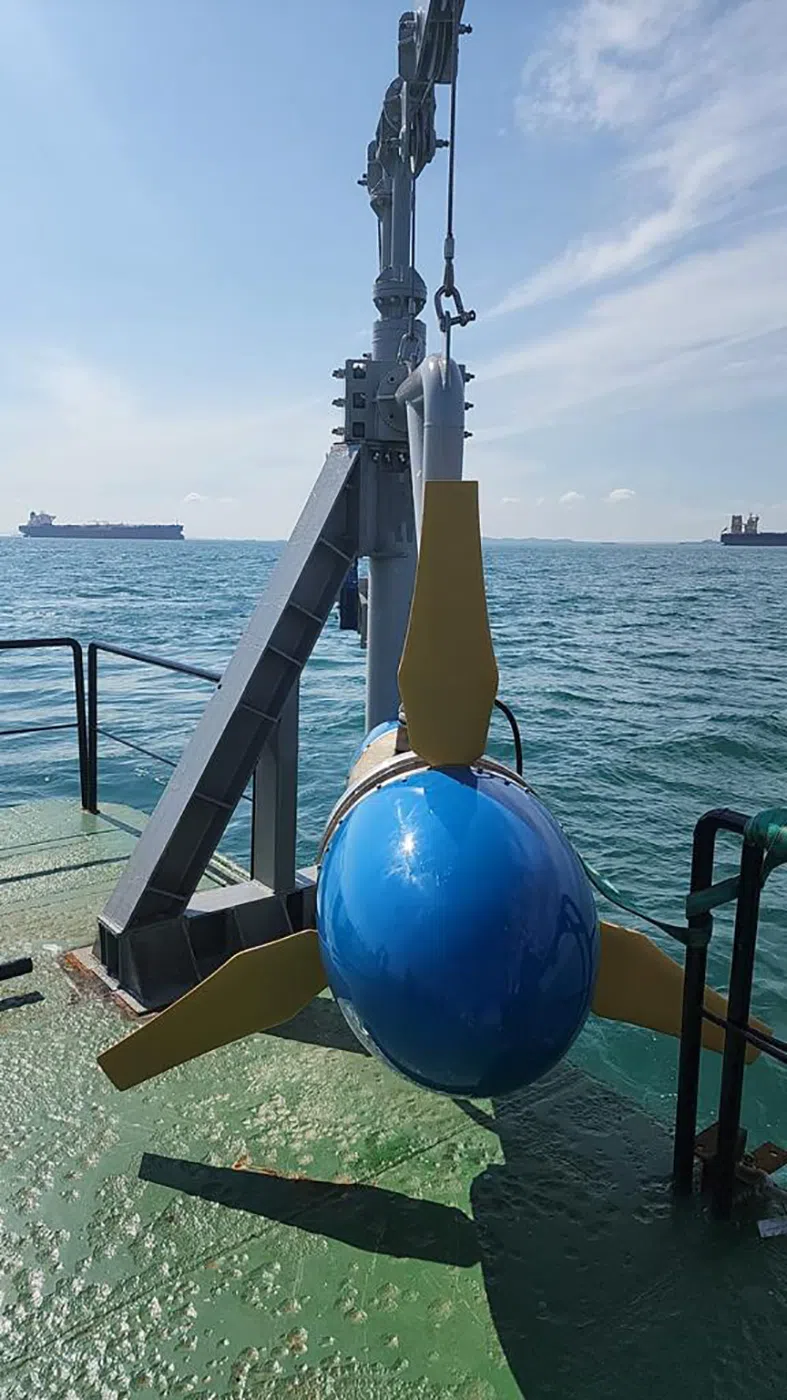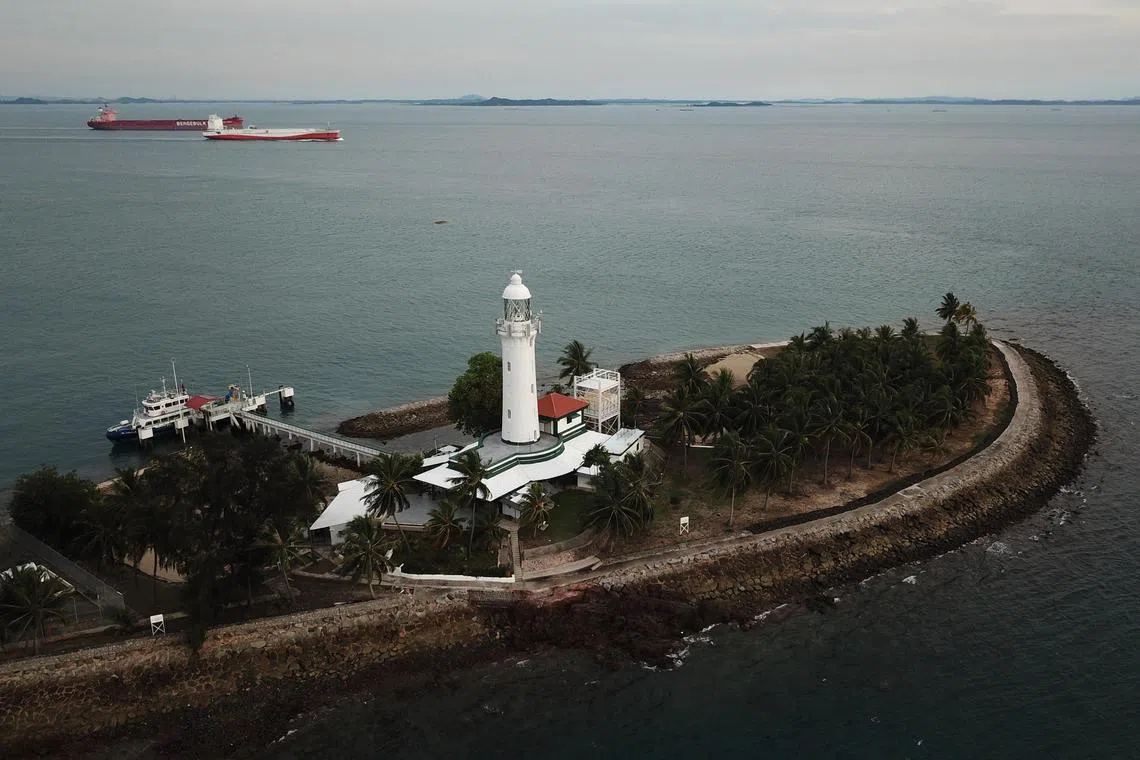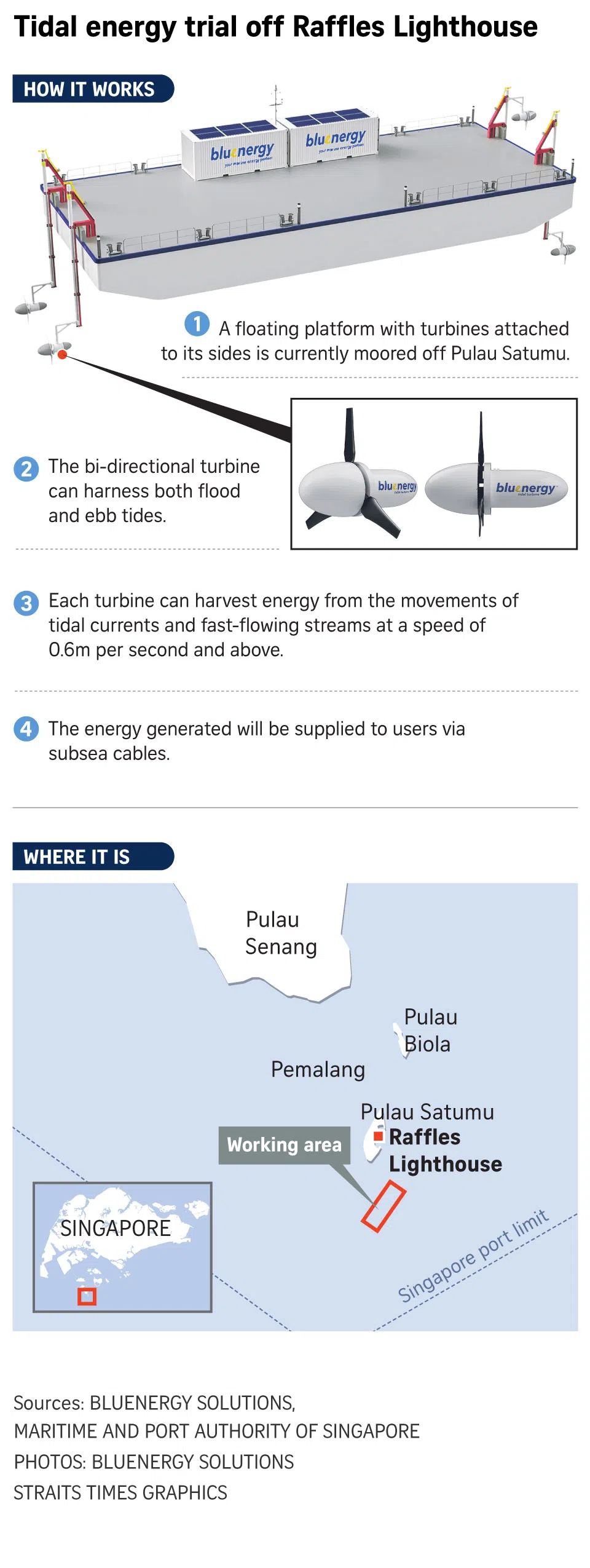Trial to power up parts of Raffles Lighthouse with tidal energy
Sign up now: Get ST's newsletters delivered to your inbox

A trial using underwater turbines to harness tidal movements near Pulau Satumu to supply clean electricity to Raffles Lighthouse is set to begin in April.
PHOTO: BLUENERGY SOLUTIONS
Follow topic:
SINGAPORE - A trial to convert the movement of tides off Pulau Satumu into electricity for Raffles Lighthouse is expected to begin in April, making this one of the first steps towards commercialising such technology in Singapore.
On Wednesday, marine renewable energy company Bluenergy Solutions and the Maritime and Port Authority of Singapore (MPA) officially announced the project, which aims to replace generators fuelled by planet-warming diesel on the offshore island with clean tidal energy.
This comes as Singapore is cutting carbon emissions in the power sector – accounting for about 40 per cent of the country’s emissions – in a bid to hit net zero by 2050.
Similar to wind turbines, tidal currents power the blades of tidal turbines, converting kinetic energy into electricity.
The proof-of-value project will run for six months, with an estimated output of 2,700 kilowatt-hours of electricity.
During this period, the project’s underwater turbines are expected to supply power to meet the non-operational electrical needs of Raffles Lighthouse, including its living quarters.
Findings from the project will inform the renewable energy technology’s deployment on offshore islands in the region, said Mr Ravin Palla, chief operating officer of Bluenergy Solutions.
He added that the Singapore-owned company has plans to trial the turbine on Sentosa in 2023, and roll out the technology in Japan on a larger scale in 2024.
“One of our key markets in the future is to reduce diesel consumption on off-grid islands in the region and beyond,” said Mr Palla.
For the Raffles Lighthouse project, MPA will purchase energy generated from Bluenergy’s tidal turbines, which were jointly designed with the Agency for Science, Technology and Research’s Institute of High Performance Computing.
Conventionally, tidal turbines are deployed in areas with fast-flowing waters, such as Orkney in Scotland and Nova Scotia in Canada.
Mr Stuart Baird, Bluenergy Solutions’ chief technology officer, said the company’s tidal turbine can convert energy from slower currents and streams flowing from 0.6m per second upwards, which is about 2kmh.
The turbine’s bidirectional design also allows it to harvest energy from both the rise and fall of tides, he added.
Mr Baird said: “(Tidal energy) is never going to be the leader of the pack (in terms of output), but it can work in areas that offshore wind and solar can’t.
“It can work at night, which solar can’t do... It is entirely predictable.”

One of Bluenergy Solutions’ tidal turbines, which were jointly designed with the Agency for Science, Technology and Research’s Institute of High Performance Computing.
PHOTO: BLUENERGY SOLUTIONS
While the renewable source of energy is available in Singapore, its use remains nascent, an Energy Market Authority spokesman told The Straits Times.
She added: “There are also challenges in tapping tidal energy in Singapore. For instance, our relatively narrow tidal range and calm seas could limit opportunities for commercial tidal power generation.
“In addition, much of our sea space is used for ports, anchorage and shipping lanes, which limit the application of ocean energy technologies.”
Any tidal in-stream or current energy project that shows the renewable energy source’s viability is significant as that goes beyond demonstrating the technology’s potential, said Dr Michael L.S. Abundo, chief executive of the Energy Research Institute @ NTU (ERI@N) start-up OceanPixel.
Previously, ERI@N had assessed that it is possible to practically extract about 250MW to 300MW of tidal in-stream energy in Singapore.

The project’s underwater turbines are expected to supply power to meet the non-operational electrical needs of Raffles Lighthouse, including its living quarters.
ST PHOTO: LIM YAOHUI
OceanPixel had explored a similar tidal project off Raffles Lighthouse, which found that there are good tidal resources here, Dr Abundo added.
Scaling up these projects, however, is not that straightforward as they require niche locations and users, he said.
Apart from finding areas with good resources, the systems need to be suitably sized, pose minimal navigation and environmental risk, and have a commercial market with a revenue model, he added.
Separately, MPA said it has tried to ensure that the Raffles Lighthouse project has minimal impact on marine life by installing sensors and designing the turbines such that they spin at a relatively slow rate.
It added: “MPA will conduct further hydrographic surveys and work with research agencies to explore the potential of scaling up the use of tidal energy for other waterfront facilities and electric charging locations for vessels in Singapore.”



